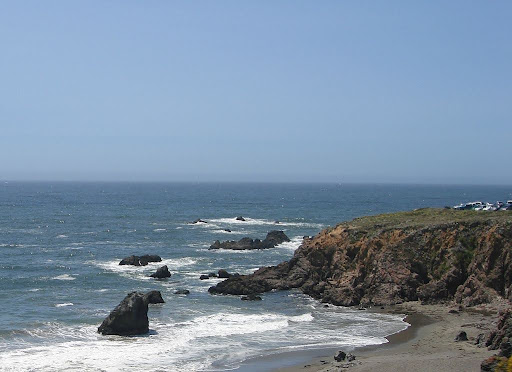Overview
California Indian Cooking: Bodega Bay Crab Louis

Author: Stephanie Lumsden, PhD (Hupa)
Lesson partner: Rebecca Lowry, Humboldt County Office of Education
Grades: 9-12
Suggested Amount of Time: 60 minutes
Curriculum Themes
- History
- Relationship to Place
- Cross Curricular Integration
Learning Goals
Students will be able to:
Define food sovereignty and give examples of Indigenous foods.
Recognize the multiplicity of perspectives about historical events by reading a Native elder’s personal narrative.
Identify the main points and key terms of a story by annotating their notes.
Lesson Overview
This lesson introduces students to the concept of food sovereignty through a Miwok and Pomo elder’s personal narrative about Indigenous foods. This lesson encourages students to think about traditional foods and reflect on how robust food systems have contributed to Native Americans’ health and abilities to resist settler colonial violence. The handouts for this lesson help students connect to the subject of food sovereignty by providing them with a first person narrative that describes food, familial bonds, American history and California Indian history simultaneously. This lesson also expands students’ culinary skills by providing a recipe and cooking activity.
Essential Questions:
How did the Bodega Bay Miwok and Dry Creek Pomo practice food sovereignty prior to colonial invasion?
How are Native food systems threatened by U.S. settler colonial occupation?
What are some examples of traditional California Indian foods?
How do Native people innovate their traditional foods?
Why is sharing recipes important?
Students will:
Engage in active close reading by annotating a personal narrative.
Complete a hands-on cooking activity as part of their lesson on food sovereignty.
Create a meal with Indigenous foods.
The teacher must:
Understand the political and cultural significance of food sovereignty for Native peoples.
Be prepared to actively engage students in close reading and coach them through building annotation skills.
Teacher Background
The Indigenous peoples of Bodega Bay are the Bodega Miwok or, as they call themselves, the Olamentko. The Olamentko are part of the Coast Miwok and Southern Pomo peoples who today are members of the Federated Indians of Graton Rancheria. The Bodega Miwok have lived in Bodega Bay for thousands of years and despite over 250 years of violent invasion, missionization, and U.S. occupation, many Bodega Miwoks remain in their homelands today. The Bodega Miwok first encountered both Spanish and Russian voyagers in their homelands beginning in 1595. In 1769 as part of their violent colonization of California, the Spanish began missionization and established Mission San Francisco de Asís in 1776 and Mission San Francisco Solano in 1823. Russian invaders also established outposts in Bodega Bay and at Fort Ross on Coast Miwok and Southern Pomo homelands in 1809 and 1812. California became a state in 1850 and the U.S. claimed Bodega Bay Miwok homelands. The Coast Miwok and Southern Pomo peoples persisted despite waves of invasion and settler colonial occupation and still live in their homelands today.
Indigenous food systems are incredibly important to California Indian peoples and all Native Americans. As the handouts for this lesson illustrate, cultivating, gathering, and processing Native foods is culturally significant to Indigenous peoples because of the social and spiritual practices that are created around them. For example, in Kathleen Smith’s personal narrative she shares a childhood memory of her father waking her and her siblings up early to gather abalone from the exposed rocks on the coast, demonstrating the familial bonds that are strengthened through food systems. Indigenous food systems are also directly related to food sovereignty which Kyle Powys Whyte defines as the right of a people to decide how their food should be produced and consumed in accordance with their values (2017). Defending healthy Indigenous food systems is an essential part of food sovereignty for Native peoples. Indigenous food systems also evidence Native peoples’ deep and thousands of years long relationships with their homelands and the more-than-human beings which live alongside them. Because strong food systems make healthy communities, Indigenous food systems were systematically targeted by the United States with settler colonial violence. As part of settler colonial invasion American settlers, both civilian and government officials, attacked California Indian food security by clear cutting oak trees that produced acorns and criminalizing traditional fishing practices; damming, unsustainable fishing, mining, and climate change have also all threatened the health of Indigenous food systems and have sometimes led to the extinction of essential plants and animals. Protecting and practicing food sovereignty asserts California Indian presences on their homelands and re-establishes ethical relationships with more-than-human beings. California Indian practices of food sovereignty, including cooking with Native foods, is one way that Native peoples resist ongoing U.S. occupation.

